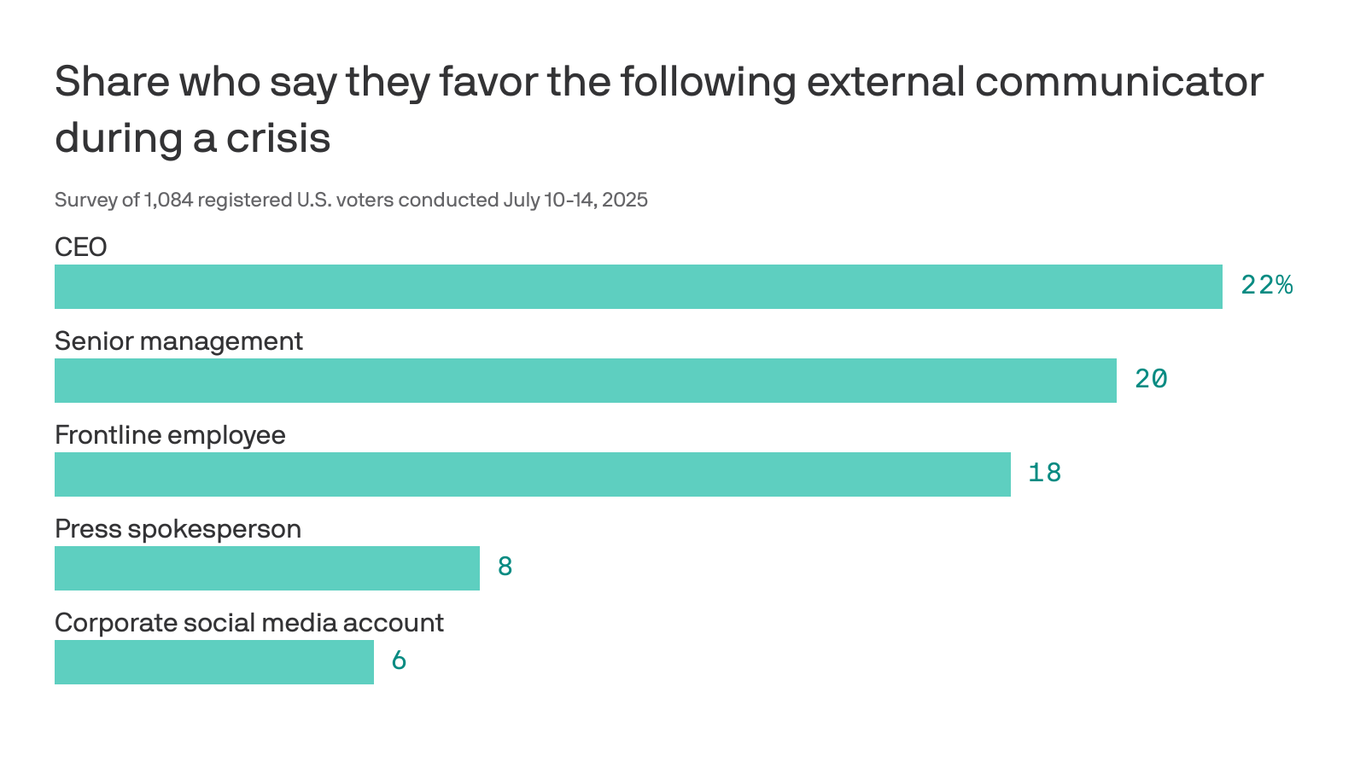
"It's a pretty clear signal that you have to be really intentional about who your audience is, where they are, and who they trust to hear from,"
"It really starts with mapping out the audiences that your company or brand needs to reach in order to be successful. And if it's rural young people, your strategy for reaching them is going to be very different [from] if you were trying to reach wealthy boomers."
"Brand marketing, communications, investor relations and government relations all need to be working in concert,"
Direct connection creates more trust and credibility among likely U.S. voters. During a crisis, 22% most trust a company's CEO, 20% trust senior management, and 18% trust frontline employees. Only 8% prefer a spokesperson and 6% prefer a brand's social media account. About half of people under 50 prefer business leaders and brands to communicate via social media posts, while fewer than 30% overall want mainstream media coverage. Liberal and moderate voters and higher earners show greater trust in traditional news, and independent journalists gain trust among 18–34-year-olds. Organizational silos hinder coordinated outreach, and audiences are generally skeptical of AI-driven news.
#crisis-communication #trust-in-leadership #social-media-preferences #audience-segmentation #ai-skepticism
Read at Axios
Unable to calculate read time
Collection
[
|
...
]